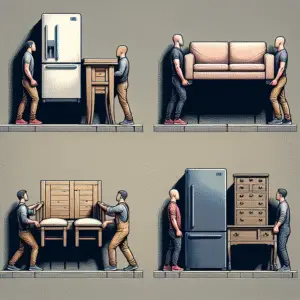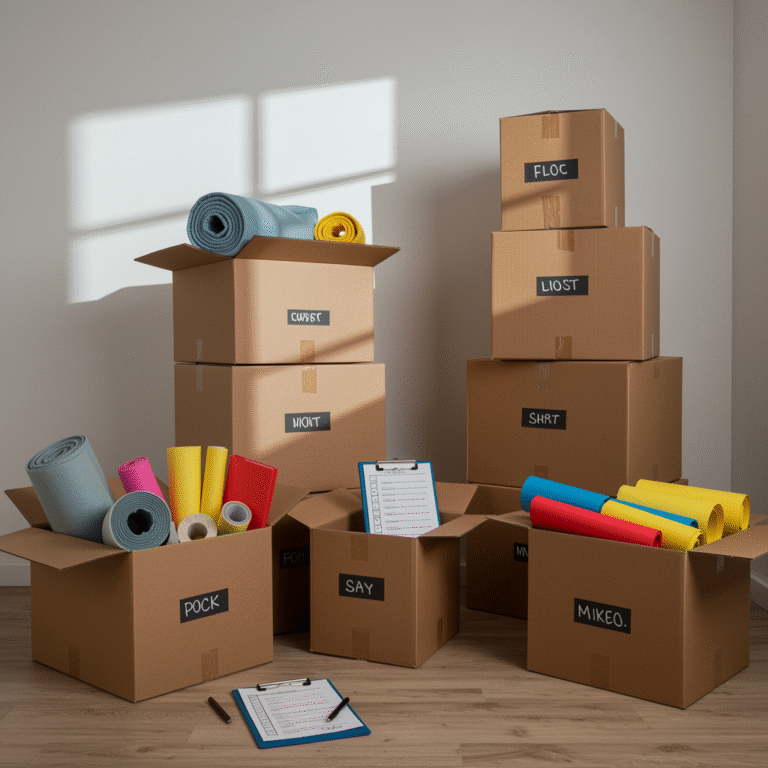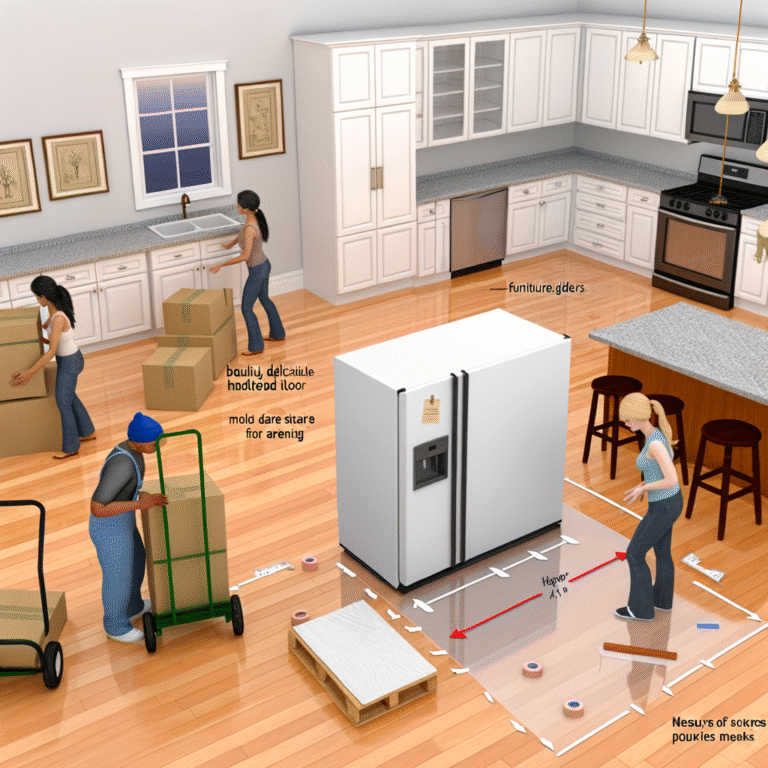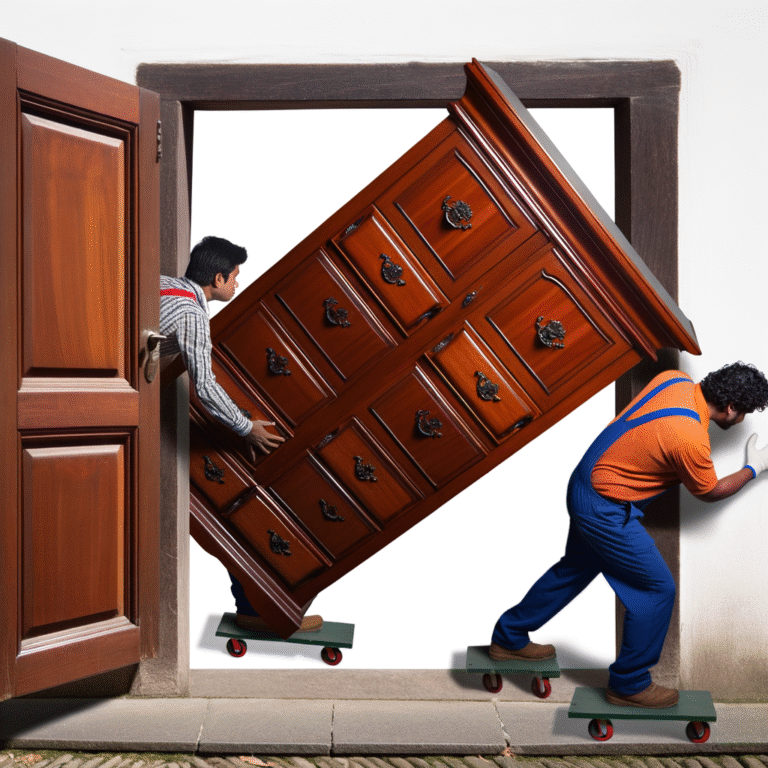Be Safe Moving Heavy Furniture !
How to Move Heavy Furniture by Yourself Safely: A Complete Step-by-Step Guide
Why Moving Heavy Furniture Safely Matters
Moving heavy furniture alone doesn’t have to result in injury or damage. With the right techniques, tools, and preparation, you can safely relocate even the heaviest pieces without professional help. This comprehensive guide will show you proven methods to protect your back, your furniture, and your home during the moving process.
1Pre-Move Planning & Assessment (1-2 Hours Before)
Evaluate Your Furniture and Space
Before attempting to move any heavy furniture, conduct a thorough assessment of both the items you’re moving and the spaces you’ll navigate. Measure doorways, hallways, and staircases to ensure your furniture will fit through without forcing or damaging walls. Take precise measurements of your furniture pieces, including height, width, and depth, accounting for any protruding elements like handles or decorative features.
Clear Your Moving Path
Create a clear, obstacle-free path from your furniture’s current location to its destination. Remove area rugs that could cause slipping, secure loose cables, and ensure adequate lighting throughout the route. If moving between floors, check that stairway railings are secure and consider removing any wall decorations that might get damaged during the move.
Gather Essential Moving Tools
Investing in the right tools can make the difference between a successful move and a potential injury. Essential equipment includes furniture sliders for smooth surfaces, moving blankets to protect finishes, lifting straps to distribute weight properly, and a sturdy dolly for wheeled transport. Having these tools ready before you start will save time and reduce physical strain significantly.
Essential Moving Equipment Checklist
- Furniture sliders or moving pads
- Moving straps or rope
- Four-wheel furniture dolly
- Moving blankets or old towels
- Work gloves with good grip
- Screwdriver set (for disassembly)
- Plastic bags for hardware
2Preparation & Safety Setup (15-30 Minutes)
Disassemble When Possible
Many heavy furniture pieces become significantly more manageable when broken down into components. Remove drawers from dressers, detach table legs, take apart bed frames, and separate modular furniture pieces. Keep all hardware in clearly labeled plastic bags and take photos of complex assemblies to aid in reassembly. This step alone can reduce the weight of individual pieces by 30-50% and make them easier to navigate through tight spaces.
Protect Furniture and Floors
Wrap furniture edges and corners with moving blankets or thick towels to prevent scratches and dents during transport. For hardwood floors, lay down cardboard or moving blankets along your planned route to prevent scratches from furniture legs or dollies. Protecting both your furniture and your home’s surfaces is crucial for maintaining value and avoiding costly repairs.
Empty all drawers and remove loose items before moving furniture. Even a few books or clothes can add 20-50 pounds to a dresser’s weight and shift the center of gravity, making it much harder to control during the move.
3Safe Lifting Techniques (During Move)
Master the Proper Lifting Form
The key to safe furniture moving lies in using your legs, not your back, to generate lifting power. Stand close to the furniture with feet shoulder-width apart, squat down keeping your back straight, grip the furniture firmly with both hands, and lift using your leg muscles while keeping the item close to your body. Never twist your spine while lifting – instead, move your feet to change direction.
Utilize Leverage and Physics
Work smarter, not harder, by using leverage to your advantage. Tilt heavy items like refrigerators or washing machines slightly and slide furniture sliders underneath, then push rather than lift. For dressers and bookcases, use the “walking” technique – tip the item slightly forward and alternately lift each side to “walk” it across the room. This method distributes weight more evenly and reduces strain on your back.
Navigate Stairs Safely
Moving furniture up or down stairs requires extra caution and technique. Always lead with the bottom of the furniture when going downstairs to maintain better control. Use moving straps to secure your grip and consider the “pivot” method for large items – position the furniture at an angle so it follows the stair’s slope naturally. Take frequent breaks and never rush stair navigation.
 Advanced Moving Techniques for Different Furniture Types
Advanced Moving Techniques for Different Furniture Types
Heavy Appliances (Refrigerators, Washers, Dryers)
For major appliances, always secure doors with tape or rope and disconnect all utilities 24 hours before moving. Use an appliance dolly specifically designed for these items, and never lay refrigerators on their side. Tilt the appliance onto the dolly and use ratchet straps to secure it firmly before transport.
Sofas and Sectionals
Large sofas often require creative maneuvering through doorways. Try the “pivot method” – stand the sofa on one end and pivot it through the doorway. For L-shaped sectionals, separate the pieces if possible. Remove legs and cushions to reduce bulk and make the piece more manageable.
Dressers and Heavy Cabinets
Always remove drawers first to reduce weight and prevent them from sliding out during transport. Wrap the main cabinet in moving blankets and use furniture sliders for smooth movement across floors. For tall pieces, secure doors and drawers with plastic wrap to prevent opening during the move.
Common Moving Mistakes That Cause Injury
- Lifting with your back: Always bend your knees and keep your back straight. Back injuries are the most common moving-related injury and can have long-lasting effects.
- Moving too fast: Rushing leads to poor form, accidents, and damage. Take your time and plan each movement carefully.
- Ignoring weight limits: If something feels too heavy, it probably is. Know your limits and use mechanical aids or get help when needed.
- Forgetting to warm up: Light stretching and warm-up exercises prepare your muscles and reduce injury risk during heavy lifting.
- Wearing inappropriate clothing: Loose clothing can catch on furniture, and poor footwear can cause slips. Wear fitted clothes and shoes with good traction.
Post-Move Recovery Checklist
- Check furniture for damage and document any issues
- Reassemble furniture using photos and labeled hardware
- Clean and inspect floors for any scratches or damage
- Stretch and rest to prevent muscle soreness
- Store moving equipment properly for future use
- Apply ice to any sore muscles or joints
Master Safe Furniture Moving Today
Moving heavy furniture by yourself is completely achievable with the right preparation, tools, and techniques. By following this comprehensive guide, you’ll protect your health, save money on professional movers, and gain the satisfaction of completing a challenging task independently.
Remember that safety should always be your top priority. If a piece feels too heavy or the move seems too complex, don’t hesitate to seek help or hire professionals for that specific item.
Start your next furniture moving project with confidence – your back, your wallet, and your furniture will thank you for taking the time to do it right!













